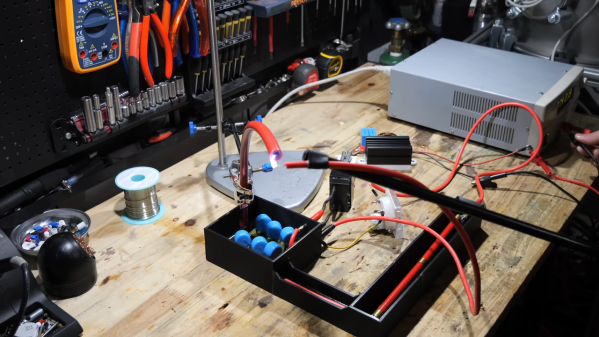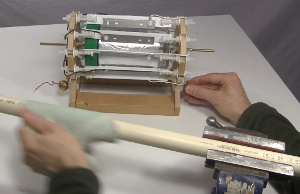If you’re hunting for a bench power supply, you’ll quickly notice options dry up above 48 V or so, and you definitely won’t find a 330 kV supply on the shelf at your local electronics shop. But with just a few parts, [Mircemk] has crafted a high-voltage source from a modified PC power supply that delivers electrifying results.
The sparks arcing over a foot of thin air are a dead giveaway, but let’s be clear: this project is not for beginners. High voltage — defined as around 1,000 V and up, with this project hitting 350 times that — carries risks of severe injury or death. Only tackle it if you fully understand the dangers and take precautions like proper insulation and never working alone.
This project showcases a Cockcroft-Walton voltage multiplier, a clever setup using diodes and capacitors to step up voltage. The capacitors charge and discharge in an alternating pattern, doubling the voltage after each diode pair. [Mircemk] uses 3 mm thick Plexiglas as an insulator, providing both structure and electrical isolation for the diode-capacitor cascade.
To achieve the 330,000 V output, [Mircemk] starts by modifying a standard PC ATX power supply, removing the Schottky diodes from the secondary winding’s output to produce a roughly 15 V square wave. This feeds into another transformer, boosting the voltage before it enters the Cockcroft-Walton multiplier. At first glance, the multiplier’s sides look identical, but their opposite polarities create a massive potential difference across the spark gap.
[Mircemk]’s benchtop exploration into high-voltage territory is a shocking success. If this project lights up your curiosity, dive into our other high-voltage adventures, like DIY Tesla coils or plasma speakers, for more electrifying inspiration.
Continue reading “Sparks Fly: Building A 330 KV Supply From A PC PSU”

























